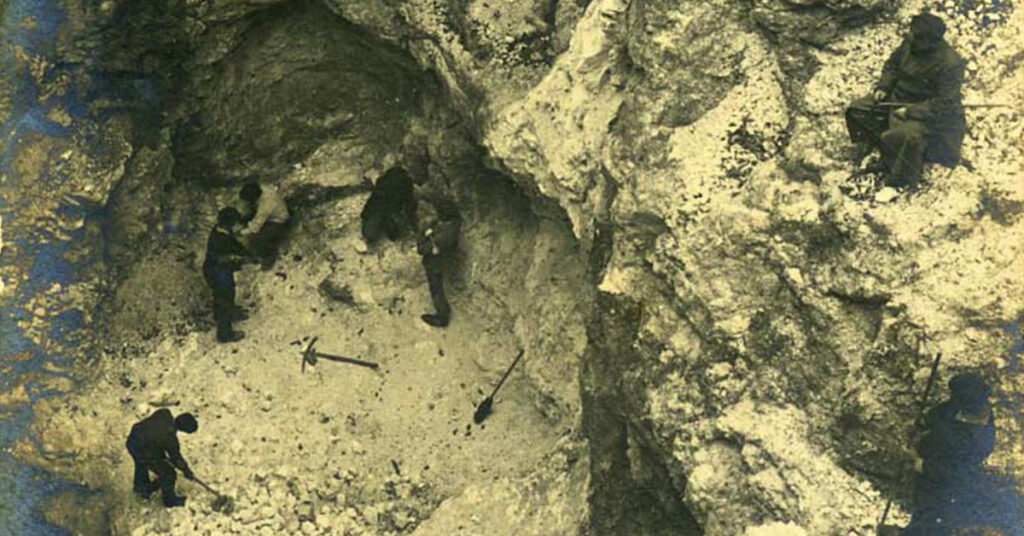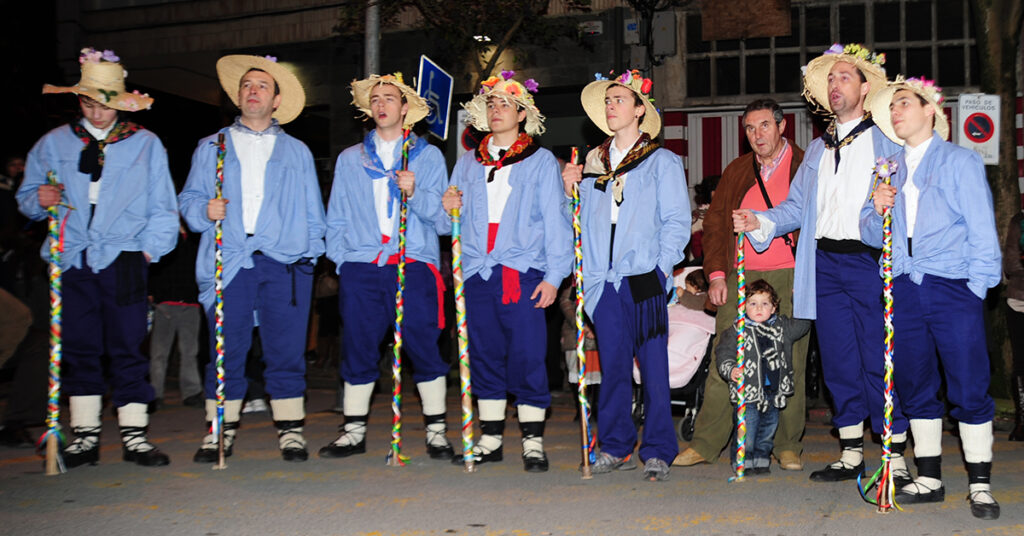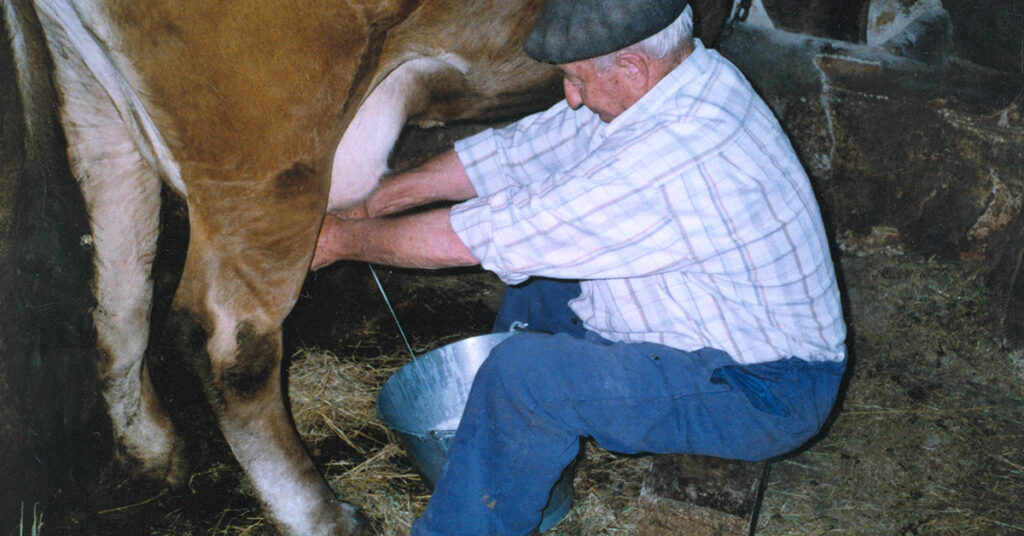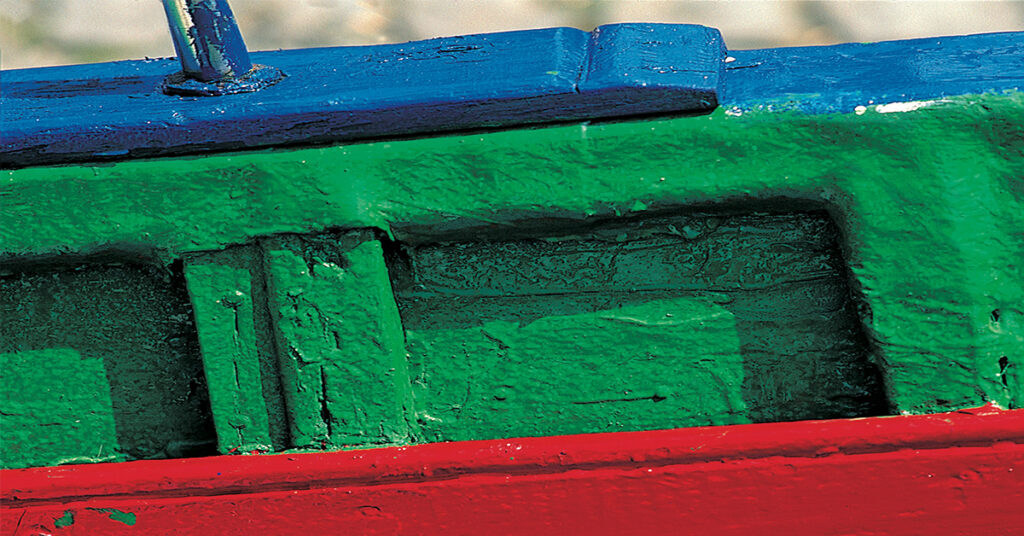Basque ethnography at a glance
Even though Carnival has been called the highlight of winter at other times in this country, the celebration of St. Agatha’s Feast Day – with the preamble of Candlemass and St. Blaise’s Day – were what could be called a “festive trilogy” combining the sacred and entertainment, in terms of Catholicism and leaving the Christmas cycle to one side.
Let us look at how cows were milked by hand, eskuz erastea, in the past. The barn needed to be a haven of peace and quiet to milk the cows. The bedding was mucked out and fodder was put in the manager so the cows stayed still.
Water was put in a bucket and the animal’s udders, erroak, were cleaned thoroughly. The milking stool, with three legs and a hole in the middle to move it easily, was then put in place.
The cows used to be milked directly into a zinc bucket, but given the risk of it turning over, they were then first milked into a pail or tank and the milk was then tipped into the bucket. In any event, when the cows were directly milked into the bucket – particularly when plastic buckets began to be widely used due to their lack of stability –, milkers had to hold the bucket tightly between their knees and feet.
The substitution of wood for synthetic materials in shipbuilding has led to the disappearance of colour in fishing ports and, imperceptibly almost, to a loss of identity too.
Colour is a characteristic of boats and fishing ports in all corners of the world; and certain colours, as well as shapes and specific elements of the ships, are what distinguish ports from one another everywhere. In Basque ports, for example, the prevalent colours are blue, red and green; rarely will we find any black or yellow in them. This set of colours must be a reflection, to some extent, of a way of understanding the world, something that developed over time until it become an expression of identity.

Old photograph of the times when “white stone” was extracted by hand (Ouvrard Biarritz – Private collection).
“I have not committed any sin to leave my Land… Is it necessary for autumn to take me away from Luhuso?” wrote the singer Enaut Etxamendi in the autumn of 1971 (Canto de Luhuso). In the middle of summer it was decided to close the Luhuso kaolin (or “white stone”) mine exploitation plant, due to its low profitability. The company closed on July 31, 1971. Two days later, the workers carried out a protest under the motto of “Lan Euzkadin (Work in Euzkadi)”. They had the support of the creators of the Enbata movement, as well as some local elected officials. Despite the fact that the company got occupied and the road to Garazi was blocked, the company was relocated and, over the years, the boulders of the “white stone” mines slowly hid under the ground. Today, those who walk around Luhuso will not find any visible traces. However, by inspecting a little, you can find the holes of the old galleries and tunnels. (more…)




